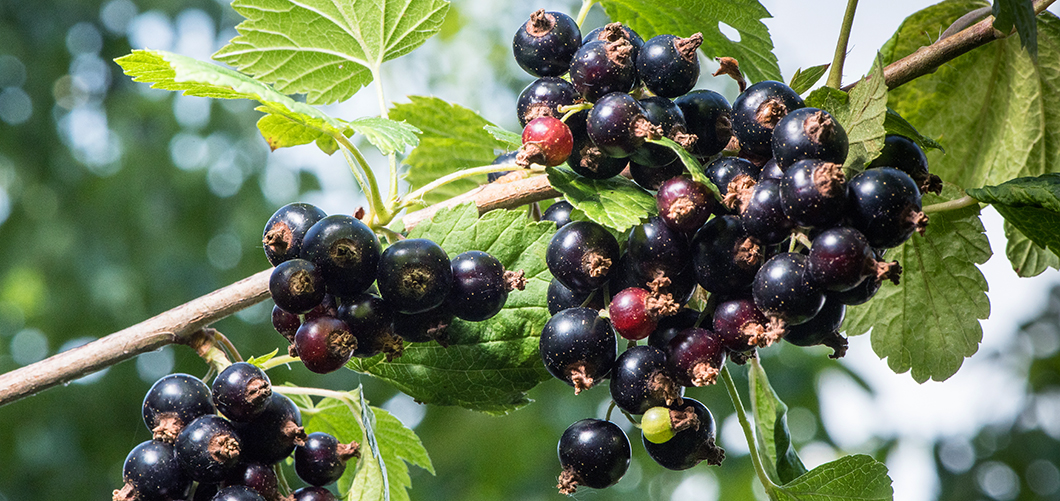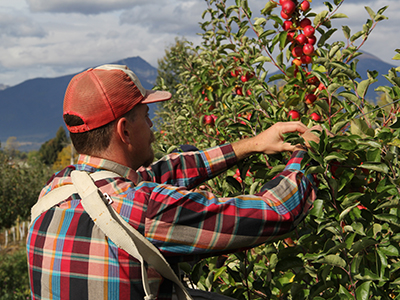Currants
Research Importance
While most Montanans may be familiar with native varieties such as the clove currant (Ribes odoratum), European species of black (Ribes nigrum) and red (Ribes rubrum) currant are better suited to commercial production. These species tend to exhibit larger fruit, higher yields, more even ripening, and potential for mechanized harvest. They’re very popular in Europe, which is where most of the commercial breeding and production occurs.
Currants are gaining momentum in the US market after a period of being banned due to their association with white pine blister rust (WPBR), Crinortium ribicola. The currant plant can act as an alternate host to WPBR, which has posed a threat to the American timber industry since the 1920s. However, recent research has shown that currants are not the only alternate host for this disease, and the timber industry has also adapted by using tree species that are less susceptible to WPBR. Breeding efforts in currants have also improved their resistance to diseases, including WPBR.*
*Resistance in black currant resulted from crosses with R. nigrum and R. ussurienses. Cultivars produced from initial crosses ('Crusader', 'Coronet', 'Consort') had poor flavor and processing qualities.
Research Findings
Six-year variety trials (2016-2021)
At WARC among the black currant cultivars, 'Whistler', 'Nicola', and 'Tahsis' showed the highest yields and produced large, market-quality berries. 'Tofino' commonly had issues with uneven ripening and tended to be more susceptible to cane borer than other cultivars. 'Jonkeer van Tets' is the most productive red currant. However, 'HRON' performance was hampered by high mortality at planting and may show improvement over time. All varieties ripened and were harvested in the third and fourth weeks of July, except for 'Jonkeer van Tets', which ripened in early July.
Read more study details and see further resources on currant varieties.
Chitosan and UVA tested for improving storage quality of fresh black currants (2023)
Research is limited on preserving the freshness of blackcurrants during storage. This study evaluated the effects of a natural chitosan coating, ultraviolet A (UV-A) light, and their combination. Chitosan helped retain berry weight and firmness while reducing mold growth. UV-A increased certain antioxidants but was ineffective against mold. Combining both treatments offered no added benefit. None of the treatments affected taste, acidity, or visual appearance. Overall, cold storage alone was sufficient to maintain blackcurrant quality over two weeks.


